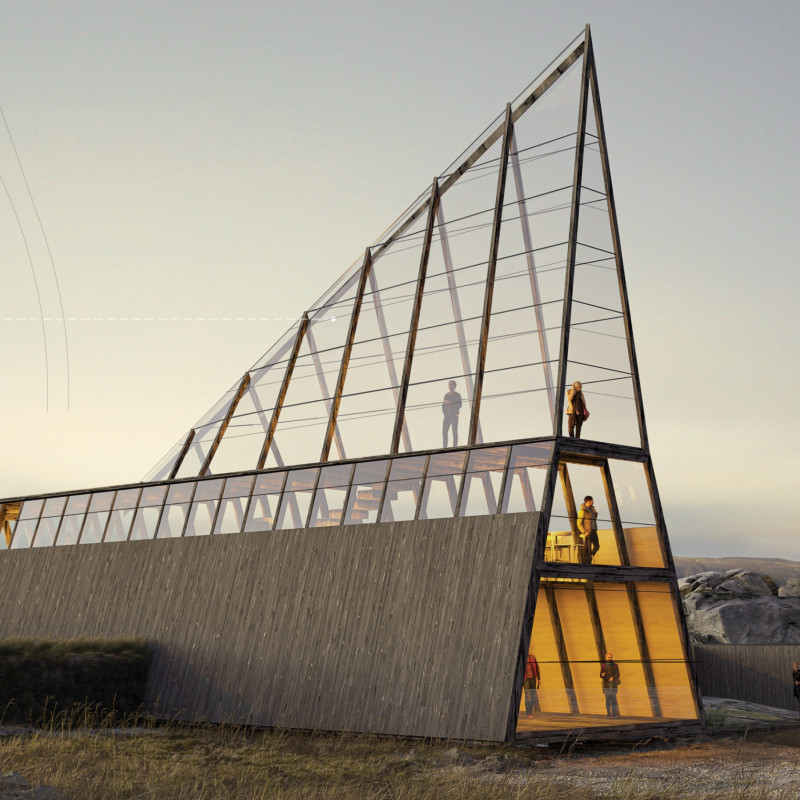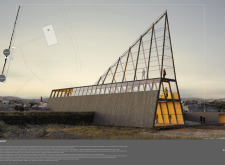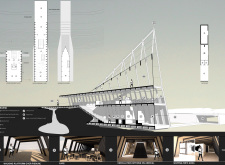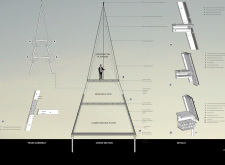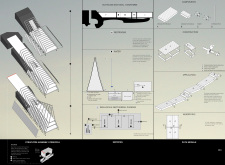5 key facts about this project
The center is characterized by its use of cross-laminated timber, which contributes to the structural integrity and warmth of the interior spaces. The design includes prominently featured glass facades, allowing for ample natural light and views of the landscape. This transparency enhances the visitor experience by creating a fluid connection between indoors and outdoors, motivating occupants to engage with their surroundings.
Unique Design Approaches and Sustainable Features
One notable aspect of this project is its triangular, pyramid-like silhouette, which not only reflects the geographical context but also serves practical purposes. The elevated structure is designed to withstand local wind patterns while facilitating unobstructed views. The incorporation of geothermal heating demonstrates a commitment to energy efficiency, allowing for reduced reliance on traditional heating sources.
Additionally, modular pathways are integrated into the landscape, enhancing circulation while ensuring minimal disturbance to the natural environment. These elements are not merely functional but also guide visitors through the site, establishing a narrative around the relationship between architecture and landscape.
Functionality and Structural Organization
The center is organized into three primary levels, each fulfilling specific functions. The lower ground floor serves as the entry point and features a reception area designed to orient visitors. The upper ground floor is dedicated to interactive spaces, including a cafe and observation platform, where visitors can engage with informational displays about the natural surroundings. The apex of the structure provides an open-air viewing platform that integrates the sensory experience of the landscape.
The utilization of high-strength stainless steel in the structural design ensures durability and stability, particularly in support of the cable bracing elements. The materials chosen not only prioritize functionality but also contribute to an aesthetically pleasing architectural language that resonates with the historical significance of the site.
For those interested in delving further into the technical and aesthetic aspects of this project, reviewing the architectural plans, architectural sections, architectural designs, and architectural ideas will provide comprehensive insights into the innovative strategies employed throughout the design process. Exploring these components will reveal the full extent of the project's focus on sustainability and user engagement.


